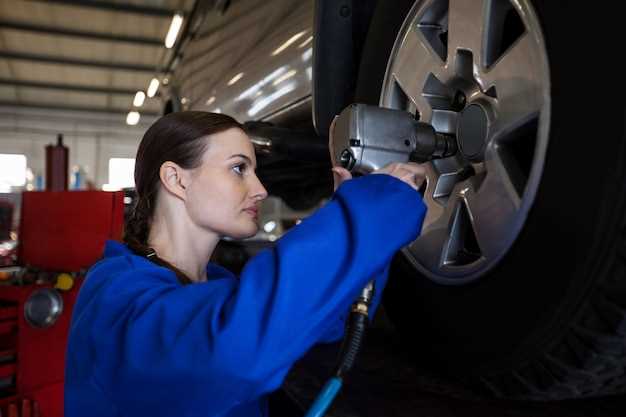
Proper alignment of a vehicle’s wheels is critical for optimal performance and safety on the road. When wheels are not aligned correctly, it can lead to a range of issues that not only compromise driving comfort but also affect the longevity of the vehicle. Misalignment can cause uneven tire wear, reduced fuel efficiency, and diminished handling capabilities, all of which can detract from the driving experience.
In addition to enhancing performance, alignment plays a vital role in ensuring the safety of both the driver and passengers. A vehicle with misaligned wheels is more prone to losing traction or stability, especially during sharp turns or sudden stops. This increases the risk of accidents and can put lives in danger. Regular alignment checks can help maintain safety standards and provide peace of mind for drivers.
Understanding the importance of wheel alignment is essential for every vehicle owner. Not only does it impact performance and safety, but it also contributes to cost savings over time. By ensuring that wheels are aligned properly, drivers can extend the life of their tires and reduce the frequency of replacements. In the long run, maintaining correct alignment is an investment in the efficiency and durability of a vehicle.
Impact of Misalignment on Tire Wear and Fuel Efficiency

Vehicle misalignment can significantly impact both tire wear and fuel efficiency. When the wheels are not aligned properly, it leads to uneven tire wear, which reduces the lifespan of the tires. For instance, if the wheels are angled incorrectly, the tires may wear down more quickly on one side than the other. This not only necessitates more frequent tire replacements but can also compromise the overall safety of the vehicle.
Uneven wear patterns can manifest as cupping, scalloping, or bald spots on tires, making it essential to monitor tire condition regularly. Additionally, misalignment forces the driver to exert greater effort on the steering, leading to fatigue and making the driving experience less pleasant.
Furthermore, misalignment leads to increased rolling resistance. When tires roll unevenly, the engine must work harder to maintain speed, which directly affects fuel efficiency. Vehicles that are properly aligned typically achieve better miles per gallon compared to those with misaligned wheels. The difference can be substantial, resulting in higher fuel costs over time.
In summary, maintaining proper wheel alignment is crucial, as it directly influences the longevity of tires and the overall efficiency of the vehicle. Regular alignment checks are a proactive step towards optimizing vehicle performance and reducing unnecessary expenses.
How Wheel Alignment Affects Steering Responsiveness and Safety

Proper wheel alignment is crucial for maintaining optimal steering responsiveness and enhancing vehicle safety. Misalignment can lead to several issues that affect the overall driving experience.
- Steering Precision: When wheels are aligned correctly, the steering feels more precise and responsive. This allows the driver to have better control over the vehicle, especially during sudden maneuvers.
- Reduced Steering Pull: Misaligned wheels can cause the vehicle to pull to one side, making it difficult to steer straight. This not only affects comfort but can also lead to dangerous situations on the road.
- Increased Tread Wear: Poor alignment results in uneven tire wear. This can negatively impact traction and steering performance, compromising overall safety.
- Improved Handling: Proper alignment ensures that all wheels point in the same direction, resulting in better handling. This is especially important in adverse weather conditions where precise steering is vital.
- Enhanced Stability: A well-aligned vehicle is more stable at highway speeds. Proper alignment minimizes vibrations and ensures that the tires maintain contact with the road, improving safety during driving.
Regular wheel alignment checks can help mitigate these issues, ensuring that steering remains responsive and safe at all times. Investing in timely alignment services is a smart decision to enhance your driving experience and ensure your safety on the road.
Signs Your Vehicle Needs Wheel Alignment and Maintenance Tips
One of the primary indicators that your vehicle requires wheel alignment is when the steering wheel is off-center. If you notice that your steering wheel is tilted to one side when driving on a straight road, it’s a clear sign that alignment adjustments are necessary. Additionally, if you feel your vehicle pulling to the left or right, this is another symptom of misalignment.
Uneven tire wear is a major warning sign. Inspecting your tires frequently can reveal bald spots or uneven tread depth, which suggests that your wheels are not aligned correctly. Ignoring this can lead to premature tire replacement and decreased performance.
Strange vibrations in the steering wheel while driving can also indicate that your wheels are out of alignment. This unsettling feeling can distract you while driving and compromise your safety on the road. Immediate inspection and possible alignment adjustment should be considered.
Another sign is the noise your vehicle produces. If you hear unusual sounds while steering, such as grinding or squeaking, your wheel alignment may need to be checked. Components within the steering system may be under undue stress due to poor alignment.
To maintain proper wheel alignment, schedule regular inspections, especially after hitting potholes or curbs. Proper inflation of tires is crucial for alignment longevity; ensure they are inflated to the manufacturer’s specifications. Additionally, rotating your tires evenly can help distribute wear and maintain alignment. Keeping a close eye on your vehicle’s performance and addressing these signs promptly can ensure a smoother and more efficient driving experience.



